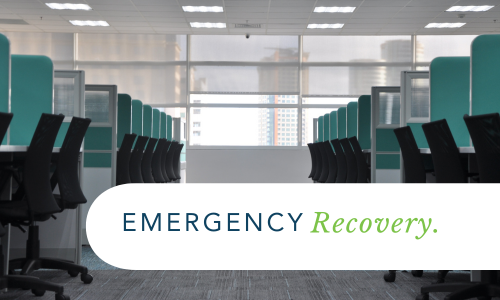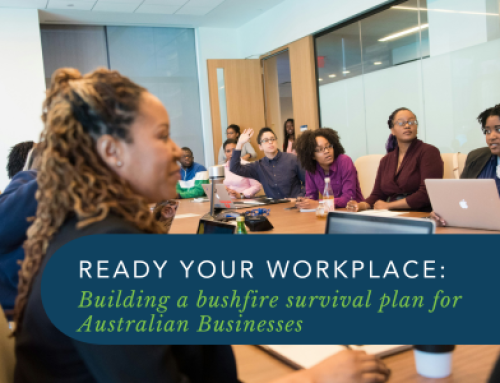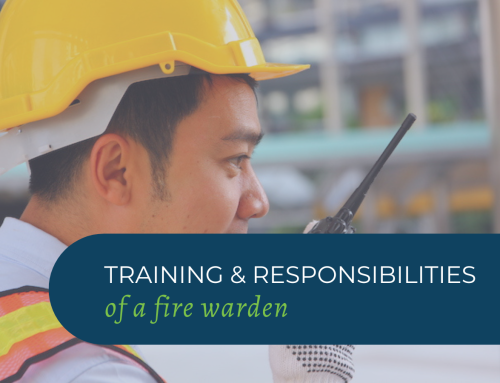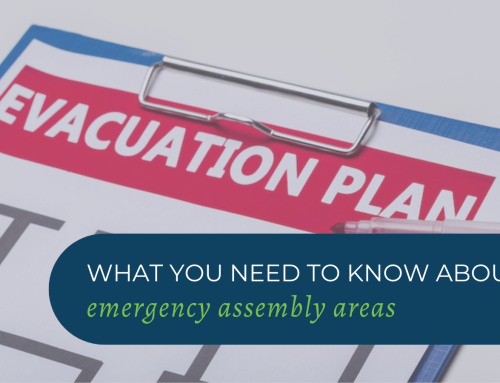Emergency Recovery
There are four components emergency response; Prevention, Preparedness, Response and Emergency Recovery. Many businesses and individuals know that a lot of time and planning goes in to preventing and being prepared for a workplace emergency. However, we also need to make sure that we are prepared for handling the recovery of our business, and, more importantly, the people who work in the business. Employees are a valuable asset to any business, so it makes sense to look after them in order to continue to help our business grow and thrive. Let’s take a look at what an organisation needs to consider in the Emergency Recovery phase of emergency response.
Emergencies come in many forms and the outcomes range from a minor disruption to a catastrophic event. What may seem like a minor incident for you could be deeply troubling for another. Everyone will have unique reactions, reaction times and timelines for recovery.
We all bring to life experiences to the workplace, as well as the skills required to carry out the work. Everyone’s past experiences have a bearing on how they problem solve, manage stress and respond to emergencies.
Emergency Control Organisation
When putting together an Emergency Control Organisation (ECO), the qualities often looked for in an appropriate person are the ability to remain calm, ability to prioritise and make decisions and to effectively communicate.
During the emergency response, our wardens will be dealing with the incident to the best of their abilities. You have provided training and practice drills, installed safety equipment, evacuation diagrams, emergency plans. But what about after the dust settles? How do we support our staff who might be struggling with the aftermath?
Debriefing
Debriefing is an important part of emergency recovery. It allows us to process what has happened, the impact it has had on us and how we get back to a semblance of normality.
Your first debrief is immediately after the emergency has been declared over by the emergency services. This is to advise everyone that the emergency is over, that we are safe and well. This allows the adrenaline rush being felt to ebb away. It allows those people who were involved in the emergency to initially get their head around what has just happened and talk about it. It is the start of the healing process. Expect cheers and tears.
The next debrief is more clinical and drills down into how people responded to the emergency and how it was handled. What worked well that we will keep doing? What was ok but could do with further training or an upgrade in equipment? What didn’t work at all and needs a major rethink? This feedback is then presented to the emergency planning committee so as any changes required can be implemented.
A separate and just as important critical incident debrief may be required given the circumstances of the emergency. This will help with the welfare and recovery of the people involved, as they will feel that their experiences are valid and feedback will be considered and acted on. It is aimed at normalising the whole event and what happened in the emergency.
Emergency Recovery for the Individual
As stated earlier, there will be a range of reactions and reaction times during an emergency. Typically, a traumatic event will be front of mind for the first 24 hours. It’s not uncommon to think about it before we go to sleep, first thing when we wake, maybe we even dreamed about it. But if by day 3 all you are doing is playing that movie over and over in your head, you should be talking to someone.
Remind people to use the employee assistance program (EAP). For businesses that don’t have an EAP, remind people that Lifeline, Beyond Blue, Black Dog, SANE to name a few, are all free and anonymous. An initial chat with their doctor can start the road to recovery.
If the emergency was catastrophic, perhaps serious injuries, multiple casualties or even fatalities, you may decide to arrange for counsellors to come to the workplace for people to attend as a group. This is the critical incident debrief previously touched on
Behavioural changes are a good indicator that someone may not be coping, and they are easier to see in others than ourselves. Look for signs such as an increase in sick leave taken, people coming to work looking uncared for- tired, unkept, saying and doing things that are not usual for them. This is an opportunity to check in with them and once again remind them of the help that is available to them.
Stress Management
Here are some simple things that you can do for yourself:
Get some rest & sleep
If you can’t sleep, then just stop & let your body start to relax and decrease tension.
Go outside
NO, nothing as drastic as suggesting you exercise. Sitting outdoors assists our daylight hormones to kick in & reset our sleep patterns (circadian rhythm)
Eat well balanced meals
On the night of the incident, you might go home and have 2 glasses of wine and a pack of Tim Tams for tea. That’s ok. But if you do this five nights a week, you’re no longer eating a balanced diet.
Avoid Alcohol and caffeine
We are probably aware that drinking a lot of alcohol can cause you to fall asleep, but it won’t give you a restful sleep. You may find cutting back on the number of coffees a day you have or not having coffee in the evening, may help you to sleep better.
Accept there are events we can’t control
Stress levels that are consistently high raise our cortisol levels. This increase in cortisol has an effect on immune system, making us more likely to get run down, fatigued and picking up viruses.
Try and maintain normal healthy routines.
Emergency Recovery can be Tough
Expect a major incident to be a bumpy ride for those affected. Good days, not so good days. Support from your local community, suppliers and customers will also help to bolster your resolve, so don’t forget to let them know how your recovery is progressing.
For some people, recovery will be complete the minute the doors are open for business and normality is restored. For others, they will be nervous about entering the building “last time I walked through these doors….”
Remember to go gently and take good care of yourself and each other.
For support on emergency management plans and emergency training in the workplace, get in touch with our team today.
GET IN TOUCH
Are you ready for peace of mind that your workforce is as safe and prepared as possible?
With a dedicated team of staff ready to help you meet compliance requirements and improve the overall safety of your workplace, all you need to do is get in touch.
Request your free audit today!



